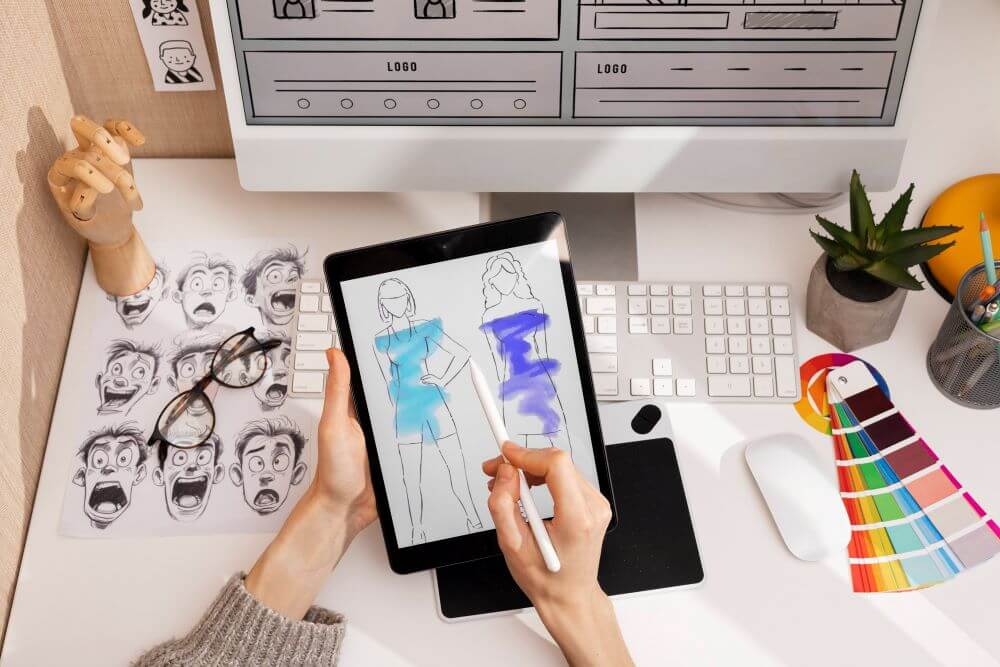The global fashion market has reached an astonishing $770.90 billion. Fashion design is an enchanting blend of creativity and practicality, and technology plays a pivotal role in helping fashion designers bring their visions to life while streamlining operations.
From managing expenses to improving workflow, digital tools can transform fashion design as we know it. Whether you work individually or as part of an established team, adopting them can give your design venture the competitive edge it needs to thrive in an increasingly difficult industry.
Streamlining Finances With Expense Management Software
Fashion designers require effective expense management software in order to successfully juggle various projects, suppliers, and deadlines. This solution offers invaluable assistance that enables fashion designers to track expenses effortlessly while allocating funds efficiently and precisely.
Designers benefit greatly from expense management tools that give real-time visibility into their financial health, which is invaluable when planning collections, negotiating with suppliers, or controlling production costs. Automated features like receipt tracking and categorization save time spent performing tedious manual tasks, allowing designers to focus on what really matters: creativity.
Expense management software’s other advantage lies in its ability to pinpoint areas for cost optimization. Designers, for instance, can identify where consolidating expenses or exploring bulk purchasing can reduce expenses and thus make more informed decisions that enhance profitability. This makes financial oversight simpler while simultaneously equipping designers to take informed steps that enhance profitability.
Enhancing Workflow Through Fashion ERP Software
Fashion designers work within an intricate landscape where design, production, inventory management, and sales must all come together seamlessly. In that context, fashion ERP software is created to accommodate these specific requirements by unifying all aspects of their creative process into one comprehensive platform.
ERP software makes life easy for designers by helping to organize production schedules, track inventory levels, and oversee supply chain activities with greater ease. ERPs ensure deadlines are met while resources are utilized efficiently and provide valuable forecasting features so designers can anticipate trends and plan production accordingly.
ERP software excels at improving team collaboration. By giving teams access to a shared platform where communication becomes simpler and errors are reduced, ERP tools offer designers who wish to expand operations an ideal tool with which they can expand operations progressively.
Creating Stunning Designs With Digital Design Tools
Design software has become an indispensable asset to modern fashion designers, providing powerful features for sketching, patternmaking, and 3D visualization. These tools enable fashion designers to experiment with textures, fabrics, colors, and other aesthetic options virtually, saving both time and material waste in the process.
Digital design tools have proven particularly successful at supporting sustainability efforts within the fashion industry. By digitally refining designs before proceeding to production, designers can reduce sample waste and cut their environmental footprint significantly. Furthermore, advanced visualization features enable designers to present polished concepts more clearly to clients or stakeholders for faster decision-making.
Many design tools now integrate seamlessly with production and inventory systems, creating a smooth path from concept to final product. This combination of creativity and practicality enables designers to produce high-quality results quickly.
Staying Organized With Project Management Tools
Fashion design encompasses various disciplines and projects can often overlap simultaneously, which makes managing multiple projects at the same time an arduous challenge. Project management tools offer an effective solution to staying organized, prioritizing tasks, and meeting deadlines efficiently.
These tools enable designers to break large projects down into manageable tasks, assign responsibilities, and track progress in real time. Features like timeline visualization and milestone tracking ensure every aspect of a collection, from initial sketches through production, is finished on schedule.
Project management tools also assist designers with team collaboration. Working either with in-house staff or external partners, designers can use centralized platforms for sharing updates, exchanging feedback, and streamlining communication, ultimately keeping every project organized, maintaining clarity, and running smoothly.
Amplifying Reach With Social Media and Content Tools
Fashion designers rely on an engaging online presence to promote their collections and establish brand recognition. Content management systems help fashion designers plan, organize, schedule, and analyze their digital marketing initiatives more easily.
These tools enable designers to maintain an engaging post schedule across various platforms, engage their target audience, and track campaign results with ease. Analytics features provide insights into audience behaviors to enable designers to refine their strategies so that their posts reach as far as possible and foster meaningful interactions between followers and creators alike.
Content management tools facilitate collaboration by enabling teams to work on campaigns together while upholding a unified brand image. With content management systems freeing up time and resources for designers to focus on creating engaging content that showcases their individual style and vision, content creation becomes much simpler.
Strengthening Relationships With Client and Supplier Management Tools
Client and supplier management tools in fashion provide an efficient means for building strong relationships between designers, clients, suppliers, and retailers. Designers offering custom services can use these tools to customize client experiences by keeping track of past orders and preferences, creating a level of service that fosters loyalty and ensures repeat business.
On the supply side, these tools help track inventory levels, monitor delivery schedules, and maintain good communications between manufacturers and designers. Effective management of such relationships ensures projects stay on schedule while meeting client expectations consistently.
Bottom Line
The fashion industry demands designers balance creativity with efficiency, so utilizing digital tools effectively in their workflow is crucial for modern fashion designers looking to stay relevant in this ever-evolving environment. By adopting expense management systems, ERPs or client relationship tools into their workflow, modern fashion designers can streamline operations, enhance collaborations, and broaden their reach, helping ensure success within this competitive market.
Adopting these innovations enables fashion designers to focus on what really matters—creating stunning designs that delight and amuse audiences. Armed with the appropriate tools, fashion design’s future looks more promising than ever.
